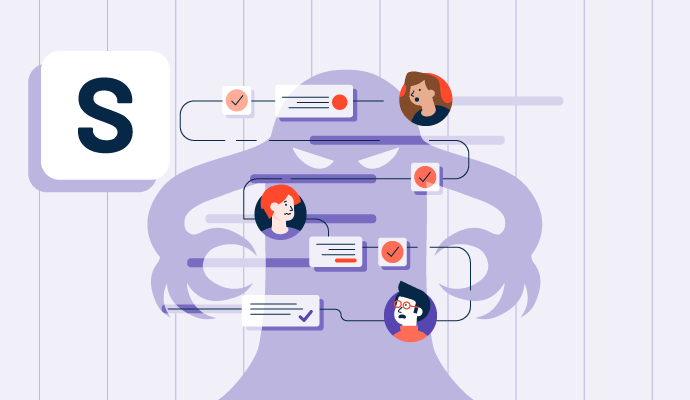What is scope creep?
Scope creep is the gradual expansion of a project’s boundaries beyond the initial plan. It typically happens when stakeholders realize the original project terms won’t result in the desired outcome, so they change the requirements or deliverables.
Scope creep has negative consequences for companies, such as project delays or failure, leading to reduced revenue earned.
Companies use project management software to prevent and manage scope creep to keep their projects on time and within budget. These platforms let companies plan large projects based on the agreed-upon scope, break them into smaller tasks, and assign them to different employees. Project managers can then monitor a project’s progress and take corrective measures if it veers off-course.
Causes of scope creep
Scope creep can affect a variety of business projects, from the smallest logo design to the largest shopping complex construction. Despite a project manager’s best efforts, scope creep can stem from the following:
- Unclear statement of work. Typically, two parties sign off on a statement of work (SOW), a document that outlines objectives and deliverables that a business will provide a client. Scope creep can result when a company skips this step or when these parameters are imprecise.
- Ambiguous or changing expectations. Scope creep also arises when the client changes project requirements and requests new product features or added services. Sometimes this has to do with the client simply modifying their needs, but other times it’s due to an evolving market landscape.
- Lack of communication. Often a project requires collaboration with different departments or teams on the client’s end. If the client doesn’t get the original scope approved by all stakeholders before work starts, changes may need to happen as the project advances, and more team members weigh in on its progress.
Consequences of scope creep
All parties hope for a smooth project from start to finish, but scope creep interferes with that experience. Some of the downsides of scope creep include:
- Missed deadlines. As a client continues to push the boundaries of what’s included in a project, the service provider or project team will struggle to keep up. As a result, the project team has to delay milestones and extend the final delivery date.
- Conflicts between team members. A lack of scope management has emotional consequences, causing confusion, draining people’s energy, and increasing stress to meet original timelines. Team members may also point fingers at each other about the root causes of the scope creep, creating the need for more moderation and mediation work for the project manager.
- Budget strain. As the scope expands, the project takes more time and money to complete. This might be beyond the client’s budget and cause delays while they secure more funding.
- Reduced quality in deliverables. A project team may not be adequately equipped with the resources or personnel to handle the demands of an expanded project. This means the team might compromise on their typical quality to work within the client’s budget or timeline, which can create disappointment on the client’s end and hurt the company’s reputation if it continues over time.
Best practices for managing scope creep
To avoid scope creep and ensure a successful outcome, a project manager must strive for clarity in communication both before and during a project. Some best practices include:
- Establishing a detailed scope of work. A business should always create a defined project scope with clear objectives and deliverables. Sometimes, it’s also worth specifying what’s not covered in the project parameters. All stakeholders should sign off on the scope before work starts.
- Developing a change management plan. The provider should create a formal process for managing changes to the original scope. Then, the client submits a request for additional items, along with justification, and the provider gathers input from relevant stakeholders before approving or denying the change.
- Documenting all communications. In addition to the original scope of work, a company should create a “paper trail” of all communications, including emails and formal change requests. That way, if confusion arises about features of agreed-upon deliverables, the company can produce documentation to settle the matter.
Scope creep vs. gold plating
Scope creep and gold plating both concern moving the goalposts on a project, so these terms are sometimes confused.

Scope creep is a gradual expansion of a project’s goals. Initiated on the client’s end, often without proper approval, scope creep is viewed as unfavorable because it can disrupt a project or reduce its chances of success.
Gold plating also adds features or goals to a project, but the term has a positive connotation. The project manager or team intentionally initiates improvements that add value to the project. Although this may create extra costs for the team, they may decide it’s worth it to impress a certain client or draw attention away from less-than-desirable project features.
Learn how to master traditional project management, which can help teams avoid scope creep.

Kelly Fiorini
Kelly Fiorini is a freelance writer for G2. After ten years as a teacher, Kelly now creates content for mostly B2B SaaS clients. In her free time, she’s usually reading, spilling coffee, walking her dogs, and trying to keep her plants alive. Kelly received her Bachelor of Arts in English from the University of Notre Dame and her Master of Arts in Teaching from the University of Louisville.





















